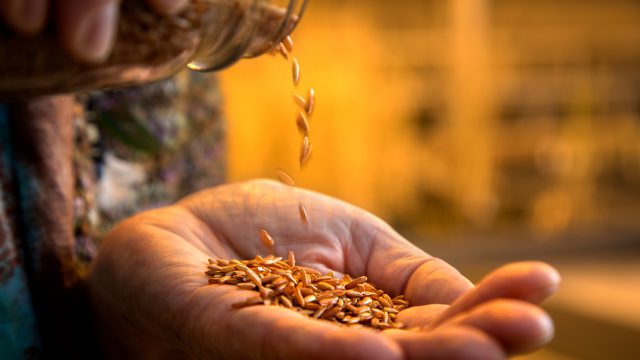Researchers from Cornell University and the U.S. Department of Agriculture (USDA), Agricultural Research Service are releasing a nutritious red rice cultivar that should appeal to people interested in alternative grains.
The new rice, called Scarlett, is whole-grain rice and has a nutty, rich flavor.
It is also packed with nutrients: The red bran on the rice has high levels of antioxidants and flavonoids that are common in red-colored grains and fruits, along with naturally produced vitamin E.
“If people find brown rice nutritious and delicious, this rice is even better,” said Susan McCouch, professor of plant breeding and genetics, who co-developed Scarlett with collaborator Anna McClung, director and research leader at the USDA Agricultural Research Service’s Dale Bumpers National Rice Research Center in Stuttgart, Arkansas.
McCouch and her team did the back-crossing between the two parents and the genetic analysis, while McClung did the phenotypic evaluation and made the final breeding selection.
Field trials showed that Scarlett rice is high-yielding and disease-resistant, and also grows extremely well under organic conditions.
It is being commercially produced and will be available to the public later this year.
Scarlett is a cross between an elite US long-grain tropical japonica variety called ‘Jefferson’ and a strain of Oryza rufipogon, the wild ancestor of Asian rice, collected in Malaysia.
This is the first time a cultivated rice variety with a red pericarp, the seed’s bran layer, will be released in the US.
Ming-Hsuan Chen, chemist with USDA, determined that the red grain of Scarlett was unique in that it has high levels of various anti-oxidant compounds that have been associated with health benefits in other foods.
Scarlett is adapted to subtropical climates of the southern United States, and similar to growing environments found in Uruguay and Argentina, where it may also be grown.
The climates in parts of West Africa and Asia are also favorable, but the grain quality may not be preferred in those cultures, McCouch said.
Due in part to the plant’s flowering time, it is not adapted to the northern US, but McCouch and McClung may look for lineages that flower earlier and would be suitable for a northern climate.
Scarlett is being released as a public variety with no intellectual property restrictions and is royalty free.










